As we grow older, our learning experiences start to look less like this...
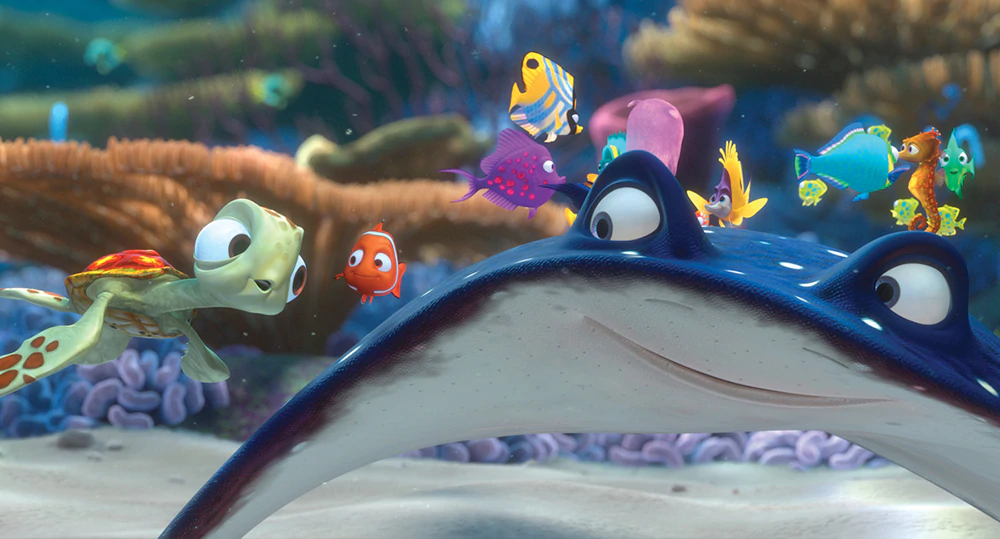 ... and more like this.
... and more like this.

Our readings start to look less like this...
 ... and more like this.
... and more like this.
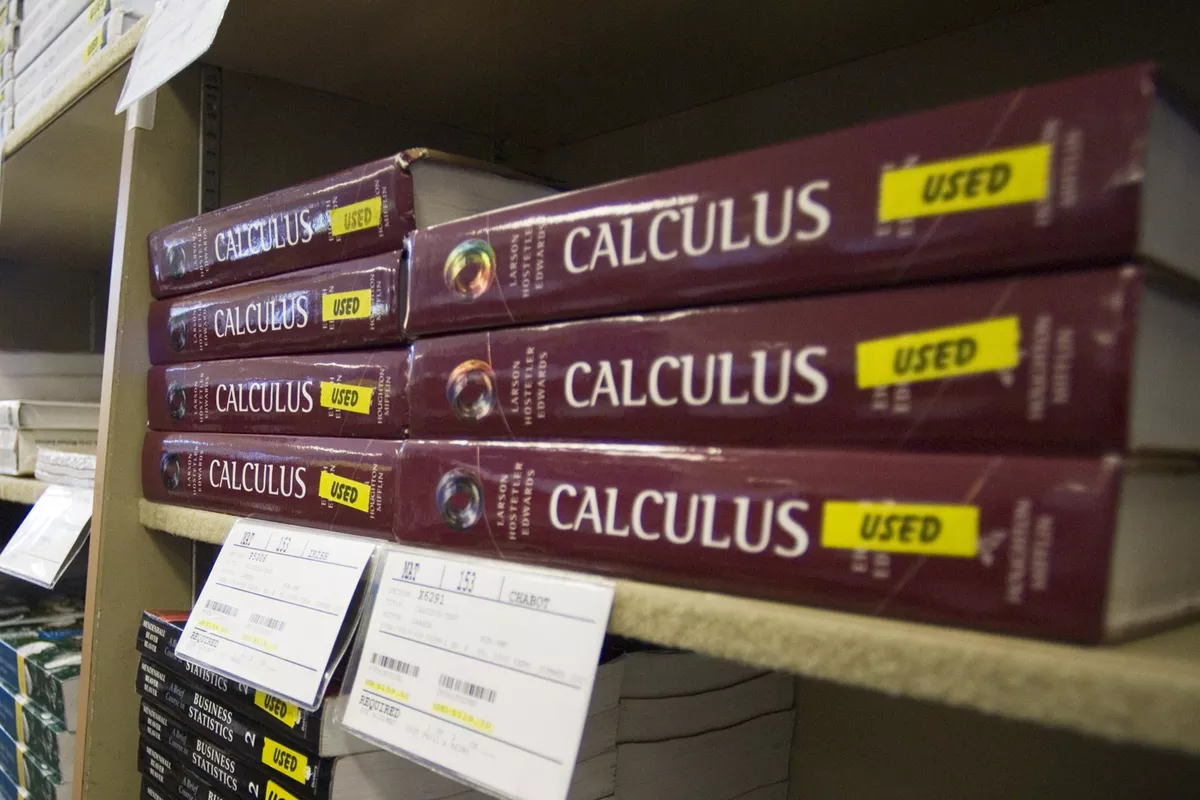
Our classrooms start to look less like this...
 ...and more like this.
...and more like this.

What ever happened to nap time and recess? Why do we assume that adults suddenly gain an infinite attention span to absorb 🧽 knowledge? As we grow older, we begin to believe that play is immature or childish. We learn to "grow out of it" and become "professionals."
During my time at Khan Academy, one of my proudest moments was making 🤸🏻♀️ recess a thing. On my last Thursday, we took a 30-minute break and went outside with chalk, jump ropes, and hula hoops. What started as a joke to gain student empathy became a reminder that we should keep making time for play.
In "Teaching Form Through Practice (Werklicher Formunterricht)", Bauhaus teacher Josef Albers captures the importance of play:
To start out by 'playing' develops courage, leads in a natural manner to an inventive way of building, and furthers the pedagogically equally important facility of discovery.
Play leads students to discover their own ways of learning and doing. I try to sprinkle ✨ a bit of play into all my lessons! To create learning playgrounds, we have to balance developing constraints with creating an open sandbox. Here are some examples of how we do this at Lambda:
🔎 Scavenger hunts
In who defines taste, I shared our finding inspiration scavenger hunt. Since then, we've learned that scavenger hunts work well for both exploratory activities and formative assessments! Every scavenger hunt has...
- a collection of things to find
- no single correct solution
In the following activity, I hid three shapes in a collection of layers, groups, and masks. (It was pretty fun to create a mess of layers.)The goal was for each student to find the blue circle, pink star, and yellow triangle. I wanted everyone to discover their own process through play.
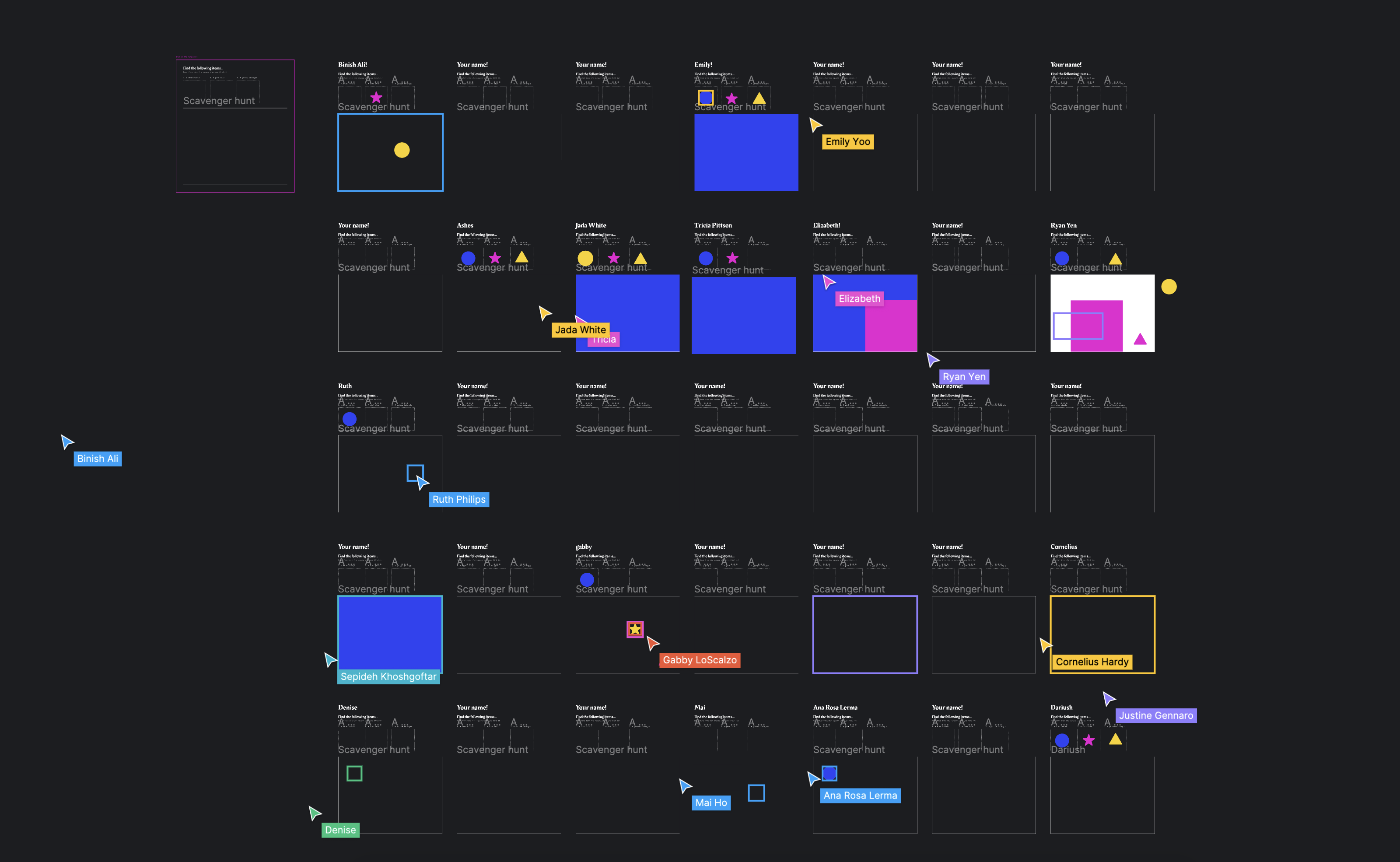
Some students looked through the layers panel, and other students used an ungroup and delete strategy. I see this as a playground because there's no best, most efficient solution. You can try out the activity in this Figma file!
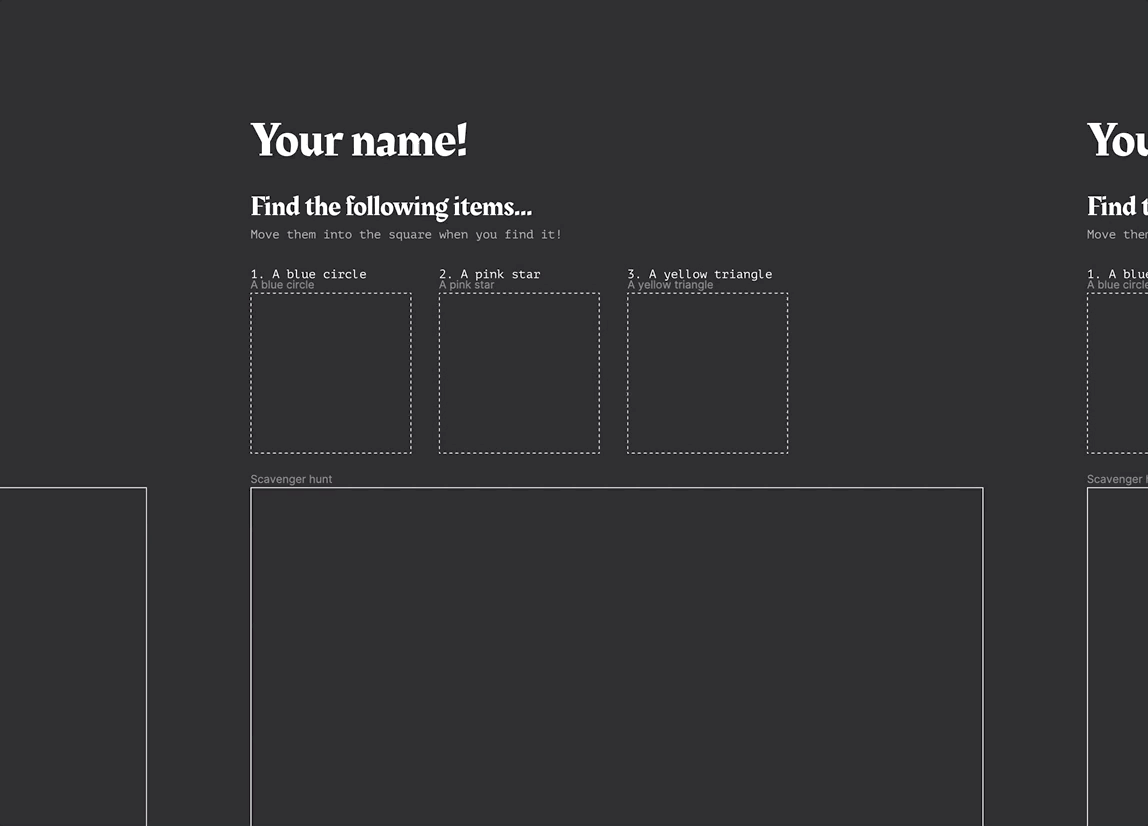
In a recent lecture, I remember a student commenting that "Avenir looks like Lato." I was like, "😳 ...but they're so different!" I felt like Miranda Priestly from The Devil Wears Prada.
After that moment, I wanted to show students how to observe the details of different typefaces. In this scavenger hunt, I had students search for Google fonts that best matched each prompt.
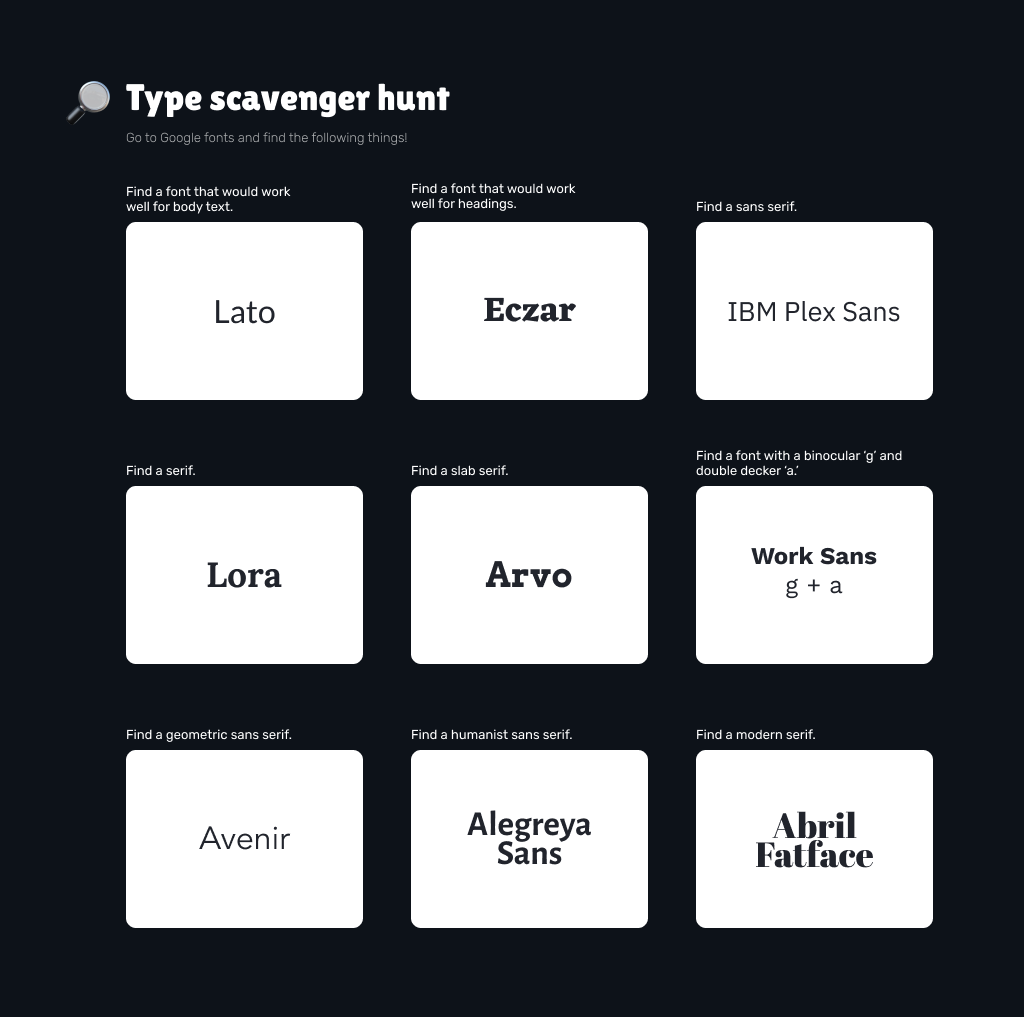
Scavenger hunts are fun and memorable ways for students to develop their critical eye. In future iterations, I want to change up the constraints for each scavenger hunt to make them more challenging.
🎯 Games
During my time at Khan Academy, I saw how much a student's eyes would light up 🤩 when a teacher mentioned playing a game in class. The best thing about games is that the students start to run their own learning experience. My role as an instructor is to sit back and facilitate.
Iteration challenge
At Lambda, I noticed that many students were getting married to their first design iteration or getting stuck on small UI problems. Especially for new designers, it's crucial to learn how to generate many ideas. During my first design role, I learned to iterate one change at a time from my first design mentor! I used to try lots of things but did not save any of the iterations 😱. I would also completely overhaul each of my design iterations. Learning to iterate systematically helped me communicate my design process to the team.
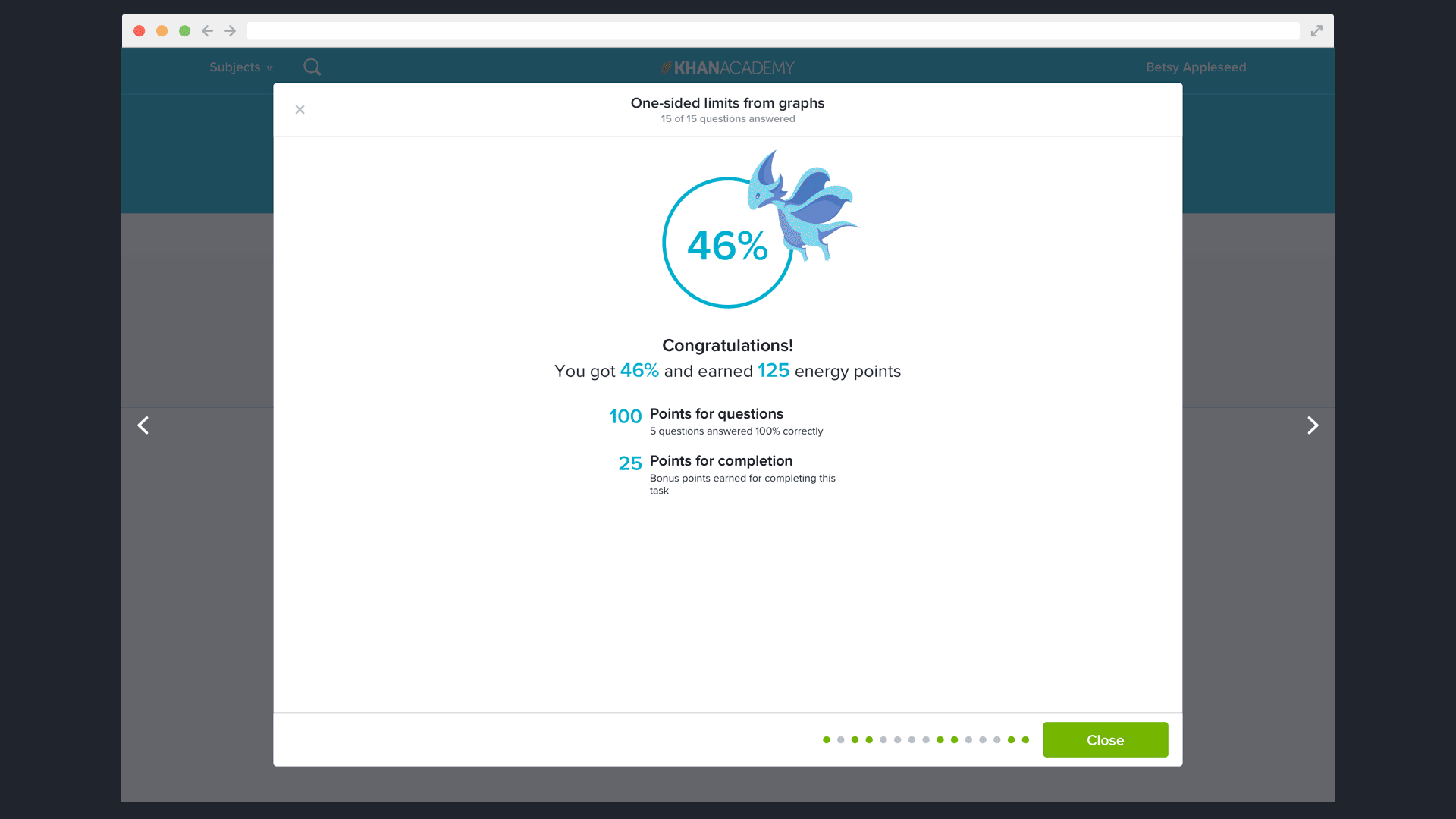
I wanted to show our students how quantity is more important than quality when exploring a design. In the activity below, I put students into groups of 3-4 to iterate on the same music player screen. The goal was for each group to make the largest quantity of designs. The team with the most iterations would "win." (Win is in quotes because we had no prize 😭. I do wonder if the output would increase if we gave away $100!)
Because I framed it as a game, students generated a lot more ideas than they usually would! We also encourage them to iterate on each other's explorations. After 20 minutes of iterating, we bring the students back to explain their favorite iterations to the larger group.
Emotion Pictionary
For this next one, I wanted to display how you can tell a story with just simple shapes and colors. This activity is heavily influenced by Molly Bang's Picture This! In this game, each student picked an emotion from this list. I purposely chose emotions that are more complex than happiness and sadness to make the exercise trickier.
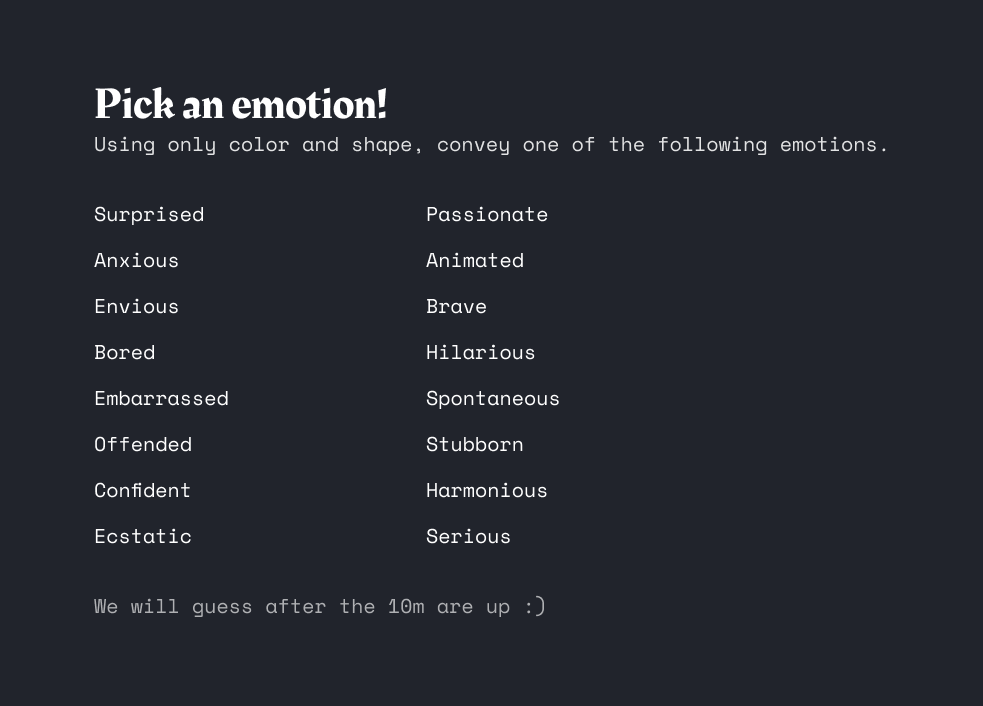
Here are some of their compositions! I thought it was interesting how some compositions were abstract, while others were very literal.
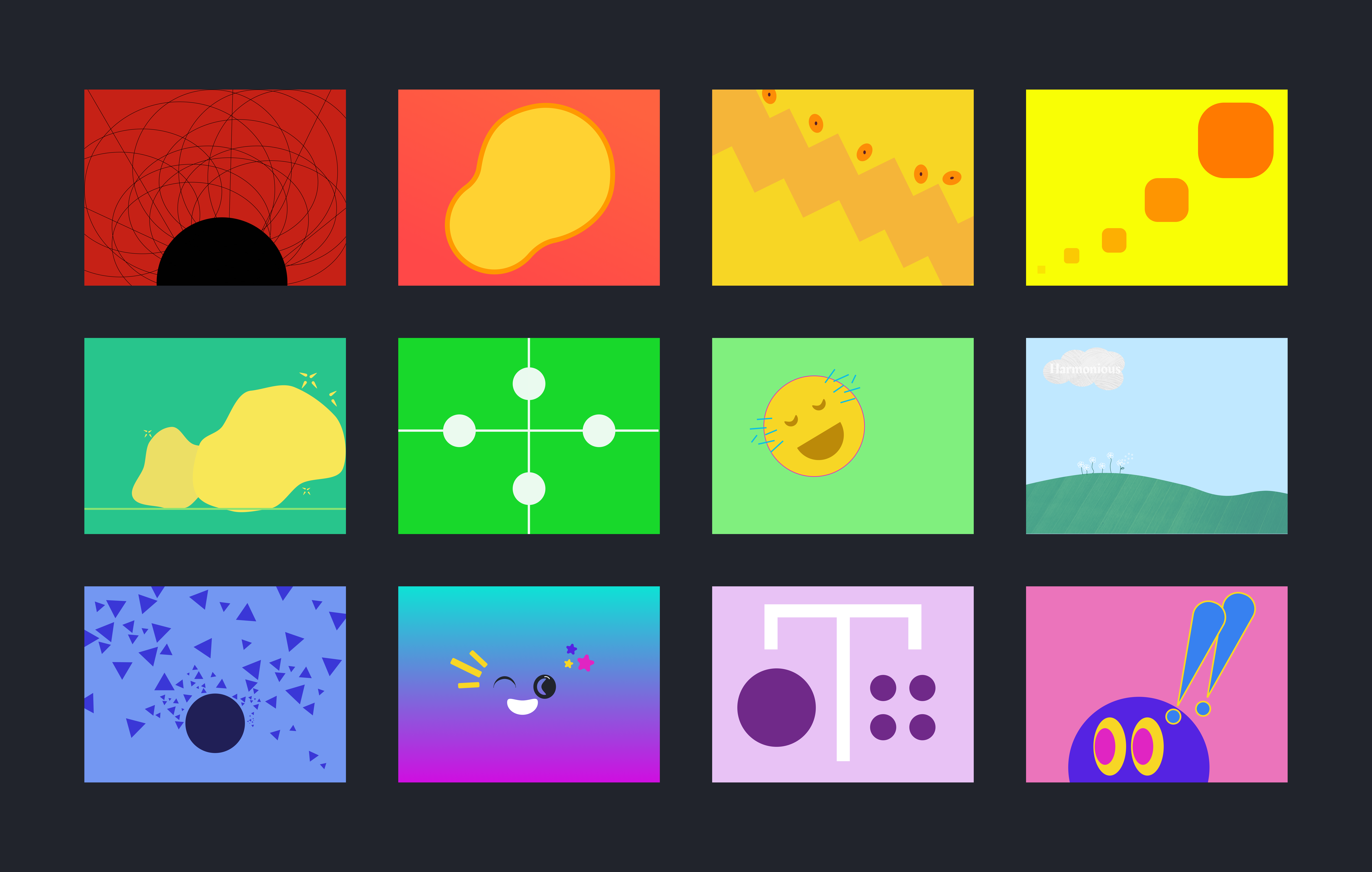
After the 10 minutes, we all left comments on each composition with our guesses! Look at all those comments 😱.
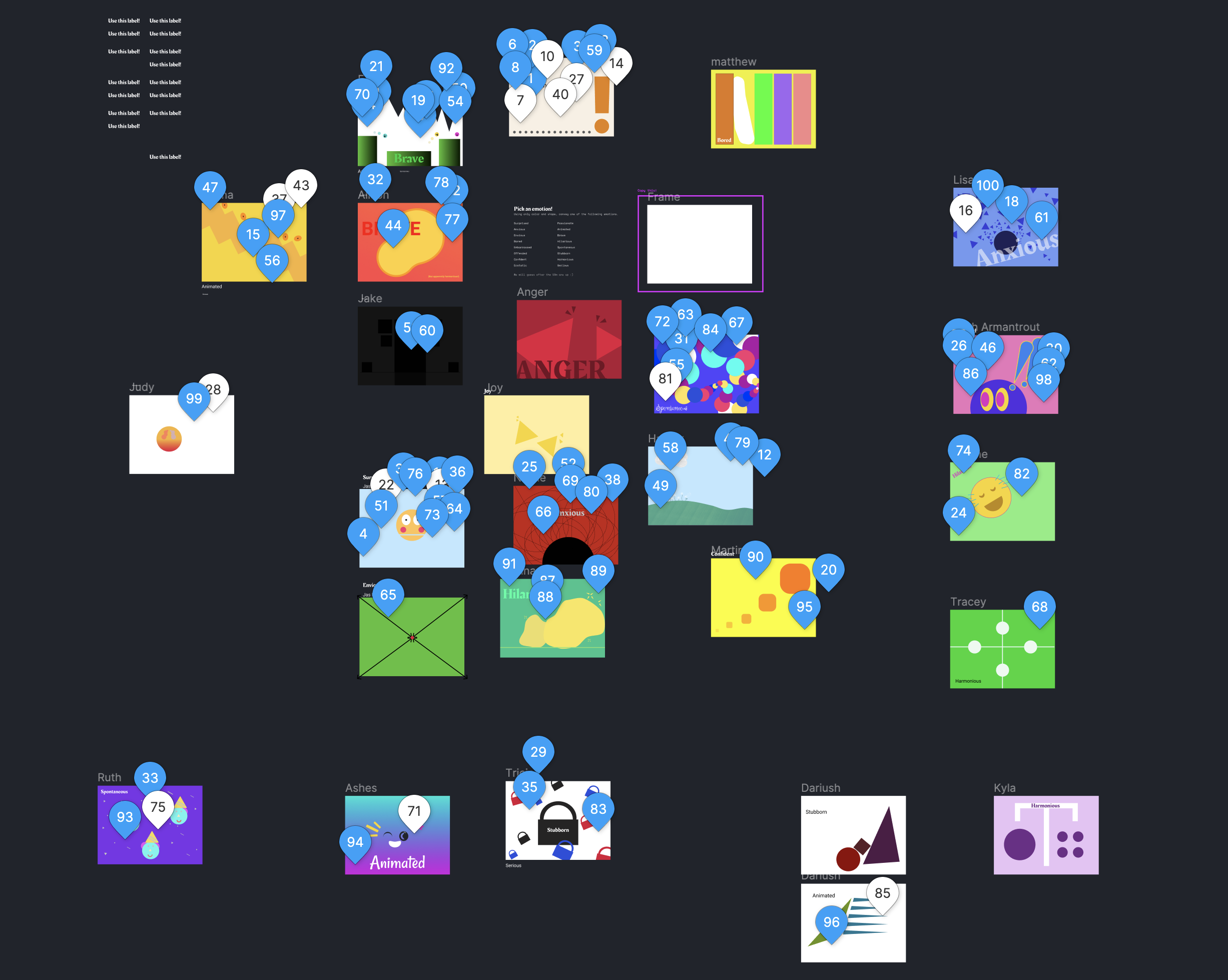
Each student wrote the emotion on their composition after the guessing spree was over.
🏖 Sandboxes
Finally, I try to create sandboxes for experimentation. Sandboxes are typically blank canvases with minimal constraints. I like to design prompts where students create self portraits as a way for them to express themselves.
In the following, I prompted students to find a font that best represents themselves. The goal was to style their name using that font! I wanted them to think critically about why they selected a specific font and style. I think it creates a beautiful portrait of all the students who joined the lesson 😍.

Sometimes, we'll also play around with Figma community files and libraries! Recently, we created custom Animal Crossing characters using the Animal Crossing Character Maker. It was a great way to play with using components and experiment with breaking them.

🤔 How can we bring play back into learning?
- How can we design learning experiences that encourage play?
- How can we bring play into our working environments?
- How do we balance industry constraints with experimentation?
I want to close with a quote from bell hooks' essay "imagination":
Teachers rarely talk about the role imagination plays in helping to create and sustain the engaged classroom. Since much of the work in a given course is the sharing of facts and information it is easy to discount the role of imagination. We need imagination to illuminate those spaces not covered by data, facts, and proven information.
Try out one of our scavenger hunts in this Figma file!